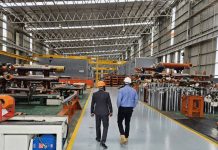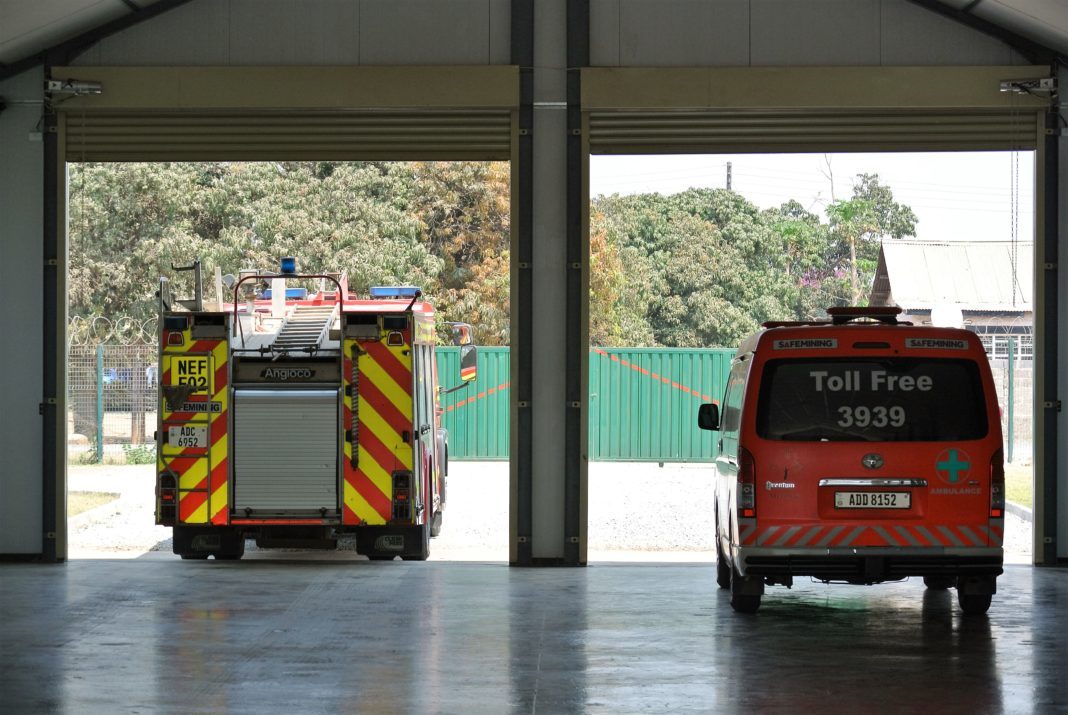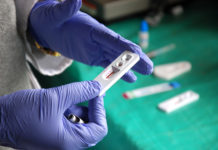After a speeding Kitwe-bound bus crashed on the Pedicle Road in Democratic Republic of Congo (DRC) in May 2016, killing more than 30 people and injuring several others, the first number surviving passengers called from their cellphones was 39-39 – Mopani Copper Mine’s emergency response centre in Kitwe, more than eight hours away.
The ill-fated Zambian bus and its passengers had no connection with the mine, apart from the fact that there were Kitwe residents on board familiar with the number.
The response centre swung into action immediately, alerting the relevant authorities – police, hospitals, senior government officials – processing the information sent from the accident site, dispensing medical advice and keeping emergency response teams on the ground updated in real time.
“Mopani’s emergency response centre helps government hospitals and fire services to work more effectively”
“Without our intervention, the consequences of this tragic accident could have been much worse,” says Dr. Boniface Zulu, senior medical officer in charge of occupational health at Mopani.
The $650 000 high-tech emergency response centre is not meant to be a public facility. It was built by Mopani to deal with mine accidents and other medical emergencies at its underground operations. However, because of a lack of funds and capacity in local government’s own emergency services, Mopani started to respond to community emergencies; now, nearly a year later, they are integrated into the centre’s operations, and run in parallel with those of the mine.
“We get around 50 calls a day from the community for emergencies, ranging from motor vehicle accidents and fires to domestic accidents,” says Patrick Katete, one of the call-centre operators. “Depending on where the incident is, we can track the location on Google Earth, and guide emergency vehicles to the scene in real time.”
The centre accommodates teams who are able to handle mine rescue and environmental emergencies. Fully trained paramedic teams are on constant alert in adjoining rooms, and have access to life-support equipment. There is a fire-engine on standby, as well as two advanced life-support ambulances which cost $90 000 each. The sophisticated medical equipment on board allows patients not just be stabilised on their way to hospital, but treated too if necessary.
“This is basically an Intensive Care Unit on wheels,” says Dr. Zulu. “We can do emergency procedures on board – we can re-start a heart and even deliver a baby.”
Dr. Zulu explains how the response centre’s involvement in community emergencies grew. “At the beginning, there was a loose arrangement. If there was a fire and the local fire service couldn’t deal with it, we’d agree to dispatch our fire engine. Then we started getting calls for general emergencies. Again, if local hospitals or emergency services weren’t able to help, we would step in.”
Demand grew, and emergency calls from the community now account for 75% of all calls to the centre – only one in four is a mine emergency. The most common categories of community emergencies are household fires and road accidents.

People now tend to call the Mopani centre first in an emergency. The system helps to ensure a speedy response because it records and logs the status of the incident as it unfolds, and there is constant follow-through by the emergency centre person on duty.
The emergency centre’s online intelligence system analyses incoming data, tracks responses, keeps a continuous incident log and can generate statistics for analysis.
“We help government hospitals and fire services to work more effectively by alerting them to emergencies in the community,” says Dr Zulu.
Far from resenting Mopani’s role, the local hospitals and fire services are highly appreciative.
“We enjoy a very good working relationship, and they are grateful for the part we play. We are all on the same side,” says Dr. Zulu.
The obvious question arises: what happens if there is a mine emergency and a community emergency at the same time? “We would err on the side of life – that’s the decision-making process,” says Dr. Zulu. “Our operations would probably get priority, but there are many factors to consider. We would look at the scale of the emergency, the severity of the injuries, and whether a government facility could handle it. Then we’d make the call.”
In extreme cases, Mopani will take serious accident victims to its own advanced mine hospitals rather than a government facility. This is what happened recently to 21-year-old Mwinsa Mhango, who was rushed to Mopani’s Wusakile Mine Hopsital to undergo emergency surgery after severe injuries sustained in a minibus crash on the Kitwe-Ndola road. She was there free of charge for six months until she recovered. A grateful Mhango says Mopani has given her “a second shot at life”.
Since the new emergency call centre opened in November 2015, it has processed nearly 18 000 emergency calls from the community. That number is likely to continue to grow. Dr. Zulu says: “Our challenge going forward is to manage call volumes – and expectations. We see ourselves as supplementing the government’s own efforts, rather than replacing them.”
In the meantime, the 39-39 number remains stored on thousands of cellphones.


























